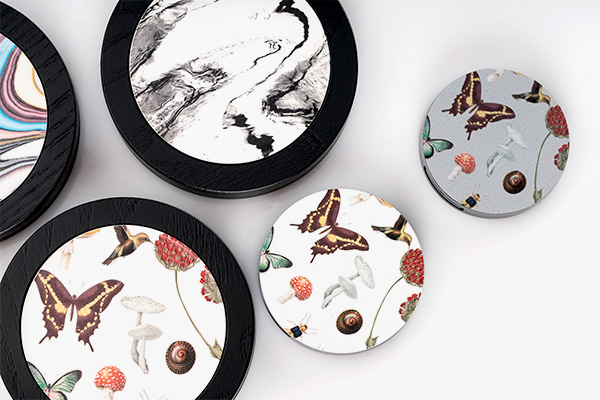Decoration technologies
Different decoration techniques can be used to achieve different looks. Combining two or more enables a host of aesthetic effects, making even standard catalogue items look bespoke.

Silk-screening
Silk-screening is a screen-printing technique which involves transferring an ink through a mesh fixed to a frame. The design is embedded into the mesh using an impermeable emulsion which blocks the ink in areas that need to be left blank, leaving only the printed pattern. One colour is printed at a time, so multiple meshes are used for multi-colour designs.
The technique is repetitive, but very precise. The process can be repeated hundreds and even thousands of times without losing definition – making it perfect for fine, intricate designs on any kind of material.
Hot-stamping
Hot-stamping is a method of transferring a colour film to a pack using a metal or silicone die with an engraved image. The die is heated and used to press the film onto the pack, transferring the design onto the item.
Hot-stamping is perfect for applying bright and metallic colours, adding a real luxury touch. On glass packaging, it also provides a more environmentally-friendly alternative to traditional ceramic inks.


Digital printing
Digital printing is opening up a lot of possibilities in the area of beauty packaging. This direct printing method enables on-demand projects, short turnaround times and a great deal of personalisation. Photographic quality can be achieved on plastic, glass and wood, even allowing for uneven surfaces.
Pad printing (tampography)
Pad printing, or tampography, is a gravure printing process. It consists of a metal or plastic plate (cliché) embossed with an image. The cliché is coated with a special ink and the excess is removed by a blade. A silicone pad then transfers the image onto the pack, pressing first onto the cliché, then onto the pack. Multiple colours can be layered without the need for drying (wet on wet).
Pad printing is very flexible and can print on virtually any shape, on any packaging material, from plastic to fabric.


Laser engraving
Laser engraving etches a design onto a surface by means of a laser. This kind of decoration enables a subtle form of branding, adding a minimalist touch of elegance. Wood, glass, metal and plastic can all be engraved, with permanent, sharp and well-defined results. No ink is required and the process is quick compared to other techniques.